General Insurance Blogs, Articles & Updates by - Magma HDI
Have us call you
- RENEW YOUR POLICY
- BUY NEW POLICY

How NCB Works for Car Insurance?
Your car insurance comes with an annual premium, which helps you bear the financial losses that may arise due to an accident. While a claim-free year may seem like a waste of money since you paid the premiums but didn't really use the benefits, it's really not the case. Firstly, having insurance provides you with mental peace that in the case of any mishap, your finances will be covered. Secondly, your insurance provider offers you discounts on your next year's premium if don't make a claim in the previous year. This is what is known as a No-Claim Bonus (or NCB). Keep reading to find out more on how to maximize savings on your Private Car Insurance In India.
What should you know about NCB?
Car insurance companies reward vehicle owners who drive safely with no-claim bonuses. The bonus becomes applicable if you get through one policy year without making a claim. The company pays the discount on Own Damage (OD) premium for each claim-free year
Typically, the amount can vary from one insurer to another. But, discounts begin at 20% per year and can go up to 50% for five claim-free years or more.
How does NCB work?
When a policyholder does not file any claim in the past one year, a no-claim bonus is initiated by the insurer.
As a result of this, you’ll get a discount on your annual premium amount subject to increase with every succeeding year.
Things to remember about NCB in India
An essential feature of NCB is that it relates to the policyholder, not the vehicle as it rewards you for precautions taken on your end. So, you can retain your NCB even if you replace your existing vehicle. Other prominent features of a no-claim bonus are:
• Applies even when you switch the insurer
When you switch from one insurer to another, the no-claim bonus remains unaffected. For example, if you have a policy from company X for the last five years with no claims made and you shift to company Y later on, the company Y will give you a benefit of 50% discount on your annual premium as NCB.
• Bonus increases every year
The insurance companies calculate your no-claim bonus in the range of 20%-50% on an annual incremental basis.
• Doesn’t apply on third-party cover
Keep in mind that the no-claim bonus applies to the own damage or OD cover on your auto insurance. So, if you have only the third-party (TP) cover, you’re not eligible for NCB. However, if you have both OD and TP protection, you’ll receive the discount proportionately.
Protecting your NCB
As NCB policyholders, you are entitled to a maximum discount of 50% for five claim-free years. However, this discount expires if you make even a single claim. In such a case, to protect your NCB, insurers give you the option of opting for an add-on cover. It covers your claim in order to protect your NCB.
Another great hack to keep your NCB would be to avoid making claims for smaller damages.
Head over to Magma HDI to find out more about NCB available with your private car insurance in India.

Monsoon Safety Checklist for your cars
Monsoons might not be the ideal time to drive around. The roads are slippery, and there are higher chances of meeting with an accident. However, the rainy season does not mean that you should stop driving altogether.
Instead, you should make sure that you follow some safety points to make sure that your driving experience is smooth and safe.
Here, we will look at some of the safety checkpoints that you should follow during monsoon. However, before we dwell on that, it is crucial to make sure that you get Car Insurance Online In India so that your car is covered in case of any unforeseen circumstances.
Fix those exhaust holes
Exhaust holes are made of iron, which means that they are vulnerable to rust. If there is a hole in your exhaust, then there are more chances for the rainwater to get in, besides the fact that a faulty exhaust is no food. Make sure that you have checked your exhaust for holes and other damages to ensure the smooth running of your car.
Cover your headlights
With time, your car headlights tend to develop spaces with them due to constant wear and tear. If they are damaged, then it is highly likely that the rainwater will get inside them, further leading to the damage. Make sure that you patch up these spaces so that your headlights are safe. Faulty headlights can lead to driving problems at night — something which no driver wants!
Check the door of your car
The doors in your car have a rubber attached to it. With constant usage, they may loosen up and make room for the raindrops to seep and ruin your interiors. To make sure that your interiors are as good as new, make sure to check on these doors now and then. If needed, replace them, as a repair might not be the easiest or the most convenient of ways.
Check your brakes
If you are driving around in rains, through clogged puddles, some water might just get deposited in your brake pads which can hinder the braking process and might lead to the deterioration of your brake pads. To get rid of the moisture, find a dry stretch of road and gently apply the brakes. The heat which comes out of friction will take the moisture away. If you find mud deposited on your pads, then go to a mechanic and get it clean. Remember that brakes are one of the most critical components of your car and you should always have them in good shape.
The way you treat your car is the way the car treats you. One cannot stress enough on the importance of taking care of vehicles. Magma HDI car insurance comes with affordable premium rates and features such as support for anti-theft devices, which can ensure that your car has a long and safe life.

First-time car insurance buyer's guide
Buying your first car can be a little overwhelming. You work persistently and save your hard-earned money aside to buy the vehicle of your choice. However, keeping your vehicle safe and secure is a necessary next step after your purchase. Accidents occur anytime and anywhere. Having a comprehensive car insurance policy to back up those damages is a wise decision to make.
These days, you may buy a car insurance policy online or by contacting a service agent at your convenience and get your vehicle insured. With a sound knowledge of car insurance policies, you can optimize your purchase and savour great benefits. Read along to have a better grasp of your first-time insurance purchase.
Purpose of Car Insurance
'Use it or lose it' is a common motto on which car insurance policy runs; to benefit from it, you need to pay a yearly premium. On the off chance that you are lucky enough not to have gone through a severe road mishap, you lose the premium sum paid for insurance. Then again, you get a No Claim Bonus, which is a quite significant sum beginning from 20% of the premium in the first year to 50% in the sixth, which is the reason why you shouldn't go for minor harms claim.
Different Covers under Policy Terms
A well-framed car insurance policy covers the damages due to natural disasters like earthquakes, floods, storms, typhoons, etc. Secondly, it includes the loss incurred due to manual disturbances like riots, theft, terrorist attacks, fires, etc. Thirdly, you as the insured can access the personal accident cover for your family if you die or suffer disability post-collision or mishap. Some company even offers benefits to co-passengers at the time of the accident. Your insurance policy covers the third-party liabilities like if you accidentally damage a third person's car or he dies of injuries due to collision, your insurer will protect you from legal repercussions.
Additional Benefits and Covers
One of the pluses of having a comprehensive car insurance policy is that you get various additional perks. It may raise the premium amounts a bit, but the level of your car's safety is maximized. Some of the add-ons can be;
- Windshield or car glass cover
- Accident cover for a paid driver or unknown passenger
- Depreciation waiver
- Personal belongings damage/theft cover
Hiring an Insurance Advisor
During the brainstorming sessions of buying your first auto insurance, it is natural to get perplexed with different coverage benefits. A simple way to tackle that confusion is to get in touch with an insurance agent who is well versed with different company's policy premiums and covers. He can advise you along the way to look over your shortlisted insurers by comparing their proposed rates. He may also identify premium discounts for your first-time policy purchase.
Going for a comprehensive car insurance policy is prudent. It gives a well-rounded cover for your car. So, it's highly advisable to get in touch with your financial experts and buy a car insurance plan today.

Your car premium may be affected by your location!
Car insurance is a critical aspect of car ownership, providing financial protection in accidents, theft, or damage to your vehicle. However, the cost of car insurance can vary depending on several factors, including your driving history, car make and model, and age. Apart from this, location is also one of the most significant factors affecting car insurance premiums. Where you live plays a crucial role in determining the cost of your car insurance premium. The influence of location on car insurance is a complex issue that involves several factors. Insurance companies analyse these factors when determining your car insurance premium.
This blog post will explore how your location affects your premium so that you are aware of the correct policy before buying car insurance. Without any further delay, let's get started.
1. Crime rate
One of the most significant factors that can affect your car insurance premium is the crime rate in your area. Insurance companies consider areas with high crime rates a severe risk, as they have a higher incidence of car theft and vandalism. This increased risk means you may have to pay a higher premium if you live in an area with a high crime rate.
2. Population density
Another factor that can affect your car insurance premium is the population density of your area. Areas with high population densities have more traffic, which increases the likelihood of accidents. Therefore, if you live in an area with a high population density, you may have to pay higher car insurance premiums.
3. Weather conditions
The weather in your area can also affect your car insurance premium. Regions with harsh weather conditions, such as snow, ice, or heavy rainfall, have a higher risk of accidents. Therefore, if you live in an area with extreme weather conditions, you may have to pay higher car insurance premiums.
4. Road conditions
Poor road conditions, such as potholes or inadequate lighting, can also increase the risk of accidents. Insurance companies consider the road conditions in your area when setting your car insurance premium. If you live in a location with poor road conditions, you may have to pay higher car insurance premiums.
5. Laws and regulations
The laws and regulations in your area can also affect your car insurance premium. Some states have minimum coverage requirements, while others do not. If you live in a state with high minimum coverage requirements, you may have to pay higher car insurance premiums.
6. Local insurance market
Finally, the local insurance market can also affect your car insurance premium. Insurance companies may charge different rates in different areas based on the level of competition in the local insurance market.
Therefore, if you live in an area with a less competitive insurance market, you may have to pay higher car insurance premiums.
When setting your insurance rate, companies consider factors such as crime rates, population density, weather conditions, road conditions, laws and regulations, and the local insurance market. Therefore, it is essential to understand how your location can affect your car insurance premium to make informed decisions when choosing a car insurance policy. Explore and compare car insurance policies to find the right one that fits your needs optimally.
Click HERE to learn more about the benefits of purchasing car insurance
Disclaimer: The information provided above is for illustrative purposes only. To get more details, please refer to policy wordings and prospectus before purchasing a policy.
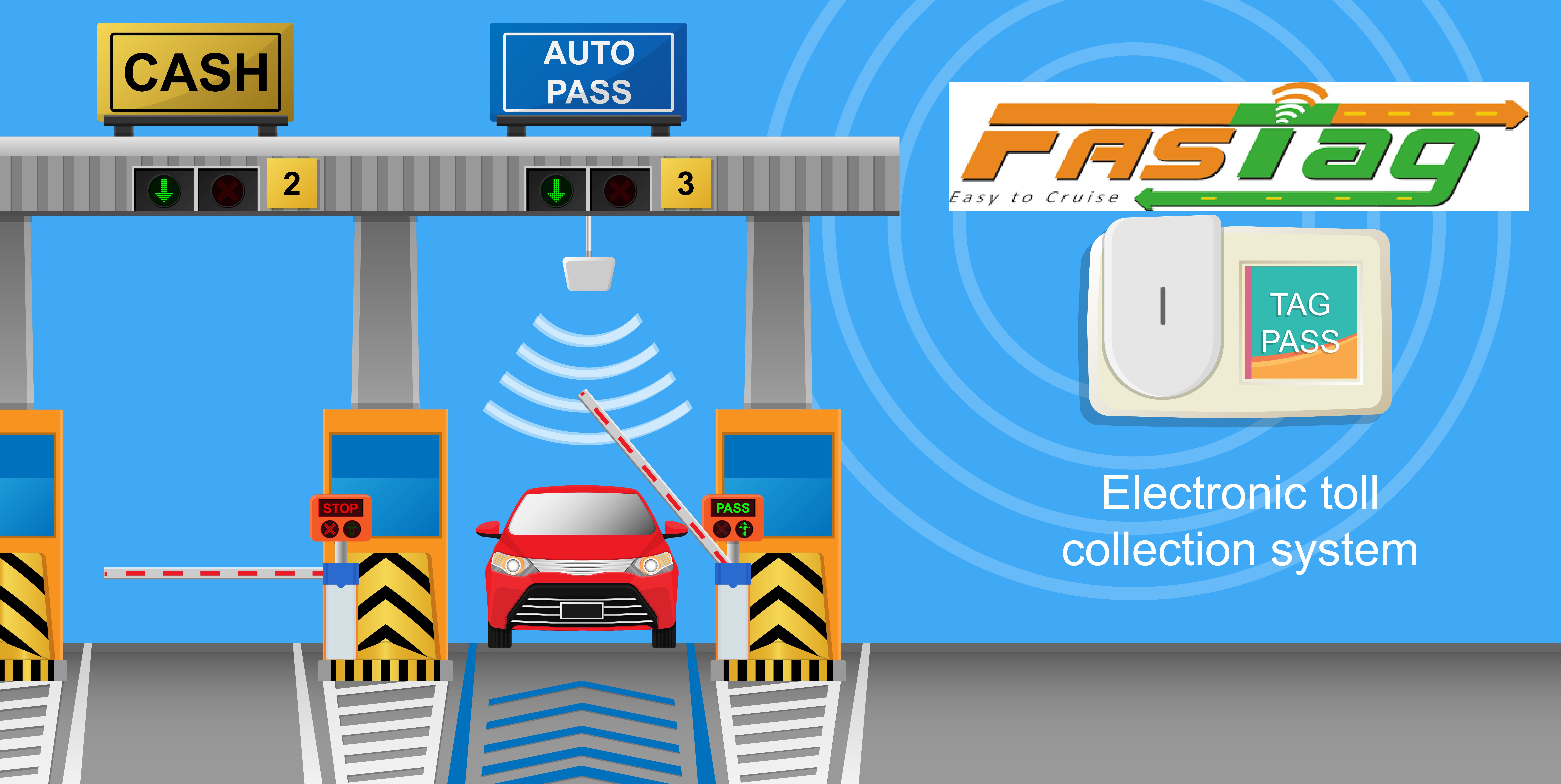
FASTag Uses and Benefits
Do you travel a lot by road? Are you tired of waiting for your turn at toll plazas on the interstate highways or expressways? Do you wish to get done with it as quickly as possible? If yes, then you must get a FASTag! As the name suggests, a FASTag is a tag which is a mean to ensure faster transit across toll plazas. The tag is placed on the windshield of the car and uses Radio Frequency Identification Technology. The tag is scanned by the tag readers placed at toll booths who then deduct the toll amount from the FASTag account. All toll plazas placed along the national highways are now using FASTag for payment of toll as per the guidelines of the government of India.
As the balance in FASTag reduces, the user needs to reload the balance in the linked wallet account or the linked bank account. By eliminating the need for cash payments at toll plazas, FASTag ensures a quicker and smoother flow of traffic.
The following reasons highlight how using a FASTag can help you save time on your journey: -
● Quick payment - As there is a FASTag affixed to your car, you wouldn't have to search your wallet for cash which ultimately reduces the duration of the transaction and your time is saved.
● Less fuel wastag - As you do not need to stop and restart your vehicle, less petrol or diesel is burned, which saves your fuel tank from draining quickly.
● Hassle-free recharge- You can easily recharge your FASTag using various methods like Internet banking, mobile wallet apps, NEFT, RTGS or even your credit and debit cards.
● Message alerts - Every time your FASTag is used, you get an alert SMS on the mobile number registered with the card which ensures the prevention of its misuse.
● Long validity- A FASTag is valid for five years, which means you need not worry about changing it frequently.
● No requirement of cash - The work of cash is taken over by the FASTag. Therefore, it eliminates the necessity of carrying cash for toll payments.
● Online portals- You can check the transactions made using your FASTag whenever you wish using specific web portals meant for the same.
Now, onto some Frequently Asked Questions: -
How to get a FASTag?
To buy a FASTag, you can ask the toll plaza employee for their sales department, or contact authorized agencies or banks that sell them. Many platforms offer car insurance quotes online and sell FASTag as well.
How much does a FASTag cost?
Generally, a FASTag can cost you around two hundred rupees for the purchase, which excludes recharge expenses.
Where is it placed?
FASTags are affixed on the windshield of the car in a very specific manner that allows the scanners placed at the toll plaza to scan it.
How to know if your card has been used?
As stated in the above benefits, a text message is delivered to the registered mobile phone when the FASTag is used. This is a sort of confirmation to the owner that payment has been made.
Do you need to maintain a certain balance?
You don't need to maintain a balance for sure, but yes there is a minimum value for a top-up of the tag which amounts to a hundred rupees.
Where is a FASTag valid?
Throughout the country, a FASTag can be used to make payments at toll plazas regardless of the city or state.
While getting FASTag will help you zoom seamlessly on the highways, do remember to check car insurance quotes online to get protection against possible accidents and incidents while on the road.
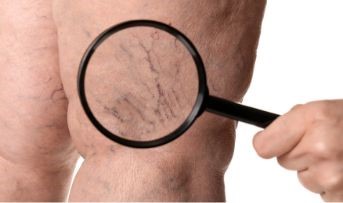
Do you experience frequent swelling in your legs? These can be the probable reasons
Medical issues are being observed as a rising problem, mainly because of drastic lifestyle changes, improper nutrition, and irregular physical activities. The best way to tackle medical adversities is by prioritising your health and never neglecting the symptoms that your body throws at you. Most health conditions develop over time due to your habits, while some are even hereditary.
One common issue is swelling in the legs, feet, and ankles. There can be multiple reasons for swelling, including physical injuries, medicinal reactions or allergies, and underlying conditions like cholesterol, diabetes, etc. If you see a frequent swelling pattern in your legs for a month, seek medical help, as it may be something to worry about. Leg swelling happens for two main reasons - edema and inflammation.
Let's explore more about them.
Factors causing edema
Several factors contribute to edema or fluid buildup in one or both legs. Here we discuss some major factors that require immediate medical assistance.
1. Congestive heart failure
When the heart is too weak to pump blood to body parts, this condition is termed congestive heart failure. Such a reduction in blood supply leads to fluid buildup, especially in the legs. Besides swelling, a person may also experience trouble breathing and constant tiredness.
2. Veins
Two vein issues can cause leg swelling and other problems in the body. Those are:
● Clotting in veins: A blood clot can form in any vein in your leg, which can break off and easily travel to your lung. This can lead to a life-threatening situation if left unnoticed. Other than swelling, if you also experience constant leg pain, cramps, or red or blue skin, immediately visit your doctor, as these might be the symptoms of vein clots.
● Chronic venous insufficiency and varicose veins: A person suffers from these conditions when the valves inside the leg veins cannot maintain the blood flow up toward the heart. Instead, the blood gets collected in pools, resulting in varicose veins. Other than swelling, you may also experience achy legs, pain after sitting and standing for too long, and dry, irritated skin.
If you experience these problems, visit the doctor to start your treatment.
3. Reaction from certain medication
Not every medication suits our bodies. Some cause side effects such as swollen legs, hair fall, irregular menstrual cycles, etc. Pain in the legs can also be a symptom of a medicine reaction. Notice the change in your body and talk to the doctor about getting alternative medicines that have zero to minimal side effects.
Factors causing inflammation
Some of the common causes that lead to inflammation in our body are listed below:
1. Arthritis
Anyone can develop arthritis at some point in their life. Due to the constantly changing environment, it is open to older adults. Diseases like gout, knee bursitis, osteoarthritis, and rheumatoid arthritis are becoming more common among people of all ages as they ignore proper care of their bodies, diet, and physical well-being.
2. Sprains and broken bones
Getting broken bones or twisting your ankle also causes swelling. It's our body's natural reaction to the injury as it moves the fluid and white blood cells into the injured area and releases the chemicals that speed up recovery. Some of the common injuries are mentioned below:
● Achilles tendon rupture: It is our body's largest tendon, and it connects the calf muscles to the heel bone. When it tears, you might experience a sharp pain in the back of the ankle and lower leg. The pain is so intense that a person may be unable to walk. ● Cellulitis: It's a severe infection that happens when bacteria get in through the crack in the skin. It is most common in the lower leg and ankles. Other than swelling, a person may experience tenderness, pain, a reddish skin area, blisters, and dimpled skin.
These were a few common reasons for frequent swelling in the legs. Your legs must be in the best shape to ensure pain-free and smooth movement. Give proper rest to your legs, and indulge in 10-15 mins of daily exercise like jogging or brisk walking.
Irrespective of the medical issues, one should always visit the doctor to rule out any worst outcome. Undoubtedly, any treatment can cost you heavily to your pocket. Therefore, getting health insurance from the best health insurance company in India to cover your medical expenses is ideal. Such insurance policies can help you in your time of need.
Click HERE to buy insurance from the best health insurance company in India.
Disclaimer: The information provided above is for illustrative purposes only. To get more details, please refer to policy wordings and prospectus before purchasing a policy.

Expert's guide on preventing fire outbreaks at home
A home is a place of comfort, protection, and security, but a fire breakout can rapidly turn it into dust. Various sources, including electrical failures, kitchen accidents, and malfunctioning appliances, can start fires. A fire breakout can be disastrous, causing significant damage to your property and personal items and possibly resulting in death. As a homeowner, you must take the essential precautions to prevent fires and safeguard the safety of your property and loved ones.
This blog discusses "expert's advice on preventing fire outbreaks at home." We'll review some of the best ways to protect your home from fire threats and the importance of obtaining the best home insurance in India. Following these suggestions and purchasing the appropriate house insurance coverage, you can protect your home from fire damage and enjoy peace of mind. So, without any delay, let's begin!
1. Install smoke alarms
Installing smoke alarms is one of the most effective strategies to avoid home fires. Smoke alarms detect smoke and notify you during a fire. This will help you to take the required precautions to prevent further damage. Install smoke alarms in each room and check and replace the batteries regularly.
2. Be careful of faulty appliances
Faulty appliances are one of the leading causes of home fires. Appliances must be handled with care and inspected regularly for flaws or damage. Always follow the manufacturer's instructions and use the appliances in accordance with their recommendations.
3. Check electrical wiring
Faulty electrical wiring is another major cause of home fires. Inspect your home's electrical wiring regularly for signs of wear and tear. Repair or replace any damaged wiring or electrical components immediately to avoid fire hazards.
4. Cook safely
Cooking mishaps are a significant cause of home fires. Practicing safe cooking skills and using caution when using the stove or oven is critical. Always keep combustible things away from the cooking area, and never leave the kitchen unattended when cooking.
5. Keep flammable objects away
Keeping flammable objects away from heat sources is critical to prevent home fires. Ensure that all flammable materials, such as cleaning solutions, paints, and petrol, are kept securely away from any heat source.
6. Have an emergency plan
Having an emergency plan can go a long way toward preventing home fires. Prepare an exit plan for a fire, and teach your family how to use fire extinguishers.
7. Obtain the best home insurance in India
The best home insurance in India is essential to protect your home from fire damage. A comprehensive house insurance policy covers fires, natural catastrophes, theft, and other unanticipated events. You get compensated for your loss and are relieved from financial stress due to the fire outbreak.
8. Conduct regular inspections
Inspecting your home for fire hazards regularly will assist in discovering potential threats and avoiding fire outbreaks. Periodically inspect your home, particularly the kitchen and electrical wiring, and take the required precautions to prevent fire threats. Install water sprinkler mechanisms, smoke detectors, and fire alarms to ensure safety against fire catastrophes.
Every homeowner is responsible for preventing fires in their homes. A fire breakout can be disastrous, causing significant damage to your life, property, and personal items. By following the expert's advice and taking the required precautions, you can ensure that your home is safe from fire threats and that you live in a secure atmosphere. In addition to these precautions, obtaining the best home insurance in India is necessary. A comprehensive house insurance policy covers fires, natural catastrophes, theft, and other unforeseen events, providing financial security and peace of mind. You can research alternatives and select the best home insurance in India to meet your requirements.
Click HERE to know more about how you can purchase the best home insurance in India and its benefits.
Disclaimer: The information provided above is for illustrative purposes only. To get more details, please refer to policy wordings and prospectus before purchasing a policy.
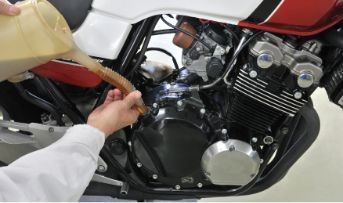
Here’s when you should change your bike’s engine oil
It is always necessary to change the engine oil timely to improve the performance and sustain the long life of your bike. However, many people ignore the importance of quality engine oil, which severely damages the engine and the bike's overall performance. Therefore, in this post, we'll discuss when you should change your bike's engine oil and why it is required to keep it in ideal condition.
When it is time to change the oil
To know when to change the bike's oil, you have many indicators that you need to keep an eye on. Your bike gives you several alerts indicating issues with the engine due to low oil levels or the need for replacement. You might hear weird sounds when giving ignition or revving your bike. Low oil level or poor quality oil can severely damage the engine and leave you to bear a massive repair and maintenance cost.
Below are some signs that will help you change the oil on time.
1. Read the manual
It might be possible that every bike has a different requirement when dealing with the engine. Read the bike manual to understand the guidelines and specific requirements for your bike. You can also learn about engine type, driving conditions, climate, etc.
2. Oil level
Check the oil level in your bike with the help of a dipstick. If you find the oil below the given level, you should look to change the oil.
3. Oil colour
You'll find a clear orange colour. As time passes and you use the bike regularly, the oil turns black due to impurities, wastes, and remains. When you find the oil dirty and get a foul smell, it is time to change it.
4. Engine performance
When you don't change the oil, you can't expect the desired performance from your bike. It is the case when your bike's oil turns black, and you should change it at the earliest. If left unchanged, you'll keep getting sluggish acceleration, reduced fuel economy, and poor performance.
5. Mileage
Generally, manufacturers suggest a rider to change the oil every 3,000–5,000 km. Changing the oil is always advisable when you cover this distance on your bike.
6. Unusual engine clatters
Untimely oil replacement might increase friction and wear on engine parts, leading to unexpected noises. So, if you hear any noise or clashes, you must change the oil. On the other hand, if you use your bike for high-performance racing, off-road biking, or long trips, you should always look to change the oil timely. These tours can strain your bike's engine and cause its performance to go down.
Points you must be aware of about the oil change
● Synthetic oils perform longer instead of the normal engine oils. You get better mileage and performance from your bike's engine. Also, thoroughly read the user manual to get clarity on oil changing.
● Regularly keep checking the oil level with a dipstick. Look at the colour and density of the oil.
● Visit the local garage and inspect your bike's engine for an oil change.
● Always use the best quality engine oil recommended by the bike manufacturer to avoid harming the engine and its parts.
It is evident to regularly monitor your bike's engine oil to enjoy a smooth riding experience and ensure the engine's longevity. Along with checking the engine oil's quality, you must also look for reliable bike insurance. Accidents can occur at any point. Therefore, you must protect your asset with comprehensive coverage. So, insurance and a timely oil change are two basic requirements that must be fulfilled on time for a stress-free and enjoyable riding experience.
Click HERE to buy reliable bike insurance.
Disclaimer: The information provided above is for illustrative purposes only. To get more details, please refer to policy wordings and prospectus before purchasing a policy.
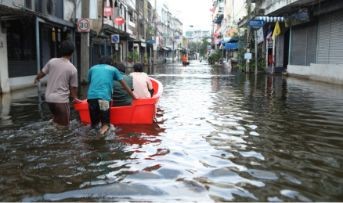
Why motor insurance is not enough: The importance of fire insurance for your vehicle
When protecting your vehicle, having a motor insurance is a legal requirement in most countries, including India. However, many vehicle owners mistakenly believe that motor insurance is enough to cover all kinds of damages, including those caused by fire. Unfortunately, this is not the case. Fire accidents can cause significant damage to your vehicle, leaving you with a hefty repair bill. This is where fire insurance comes to your protection. Fire insurance is a type of insurance that covers damages caused by fire, including damages to your vehicle.
This blog will discuss the types of damages fire insurance covers, the cost of fire insurance, and how to obtain fire insurance for your vehicle.
1. Motor insurance does not cover fire damage
While motor insurance covers damages caused by accidents, theft, and natural calamities, it does not cover damage caused by fire. If your vehicle catches fire, you cannot claim any compensation from your motor insurance policy. On the other hand, fire insurance is specifically designed to cover damages caused by fire.
2. Fire accidents are common in India
India witnesses a high number of accidental and intentional incidences of fire annually. Fire can spread quickly and cause significant damage to your vehicle in minutes. Having fire insurance for your vehicle will protect you against the financial impact of such accidents.
3. Fire insurance covers the cost of repair or replacement
If your vehicle is damaged by fire, fire insurance will cover the cost of repair or replacement, depending on the extent of the damage. This means you will not have to bear the entire cost of repairing or replacing your vehicle's parts, which can be a significant financial burden.
4. Fire insurance is affordable
Contrary to popular belief, fire insurance is not expensive. The cost of fire insurance for your vehicle will depend on various factors, such as the age, make, and model of your vehicle, as well as the extent of coverage you choose. However, fire insurance is a small price compared to the potential cost of repairing or replacing your vehicle after a fire accident.
5. Fire insurance provides peace of mind
Having fire insurance for your vehicle provides peace of mind, knowing you are protected against the financial impact of fire accidents. This is especially important if you rely on your vehicle for your livelihood or have invested significant money in purchasing or modifying your vehicle.
6. Fire insurance covers damages caused by riots
In a situation of riots and civil disturbances, vehicles are often targeted and damaged by fire. Fire insurance covers damages caused by such incidents, providing financial protection to your vehicle.
7. Fire insurance covers damages caused by electrical faults
Electrical faults can also cause fire accidents in vehicles. Fire insurance covers damages caused by electrical faults, providing financial protection against such incidents.
8. Fire insurance is easy to obtain
Obtaining fire insurance for your vehicle is easy and uncomplicated. You can purchase fire insurance as an add-on to your motor insurance policy or as a standalone policy from any insurance provider. Purchasing it is quick and hassle-free, and you can do it online from the comfort of your home.
While motor insurance is mandatory by law in India, more is needed to protect your vehicle against all kinds of risks. Fire accidents can cause significant damage to your vehicle, leaving you with a hefty repair bill. This is why it's essential to have fire insurance for your vehicle in addition to your motor insurance India. Fire insurance provides comprehensive financial protection against damages caused by fire, riots, electrical faults, and other such incidents.
Click HERE to learn more about motor insurance India and its benefits.
Disclaimer: The information provided above is for illustrative purposes only. To get more details, please refer to policy wordings and prospectus before purchasing a policy.

Here are the different types of back pain you must be aware of
Back pain is one of the most common problems everyone faces across the length and breadth of the country. Some people may face a dull pain in their back now and then, while for some, it may be constant. Others may experience sudden and excruciating pain in their back, that they may be unable to sit or walk properly.
The leading causes of back pain are a fall, an accident, lifting a heavy load, or age-related factors. Sometimes a medical condition can also result in back pain. The treatment varies with the category of back pain you are suffering from. Hence, let us first understand the different types of back pain.
1. Cervical pain
The cervical region in our body is the vertebrae of the neck. When you suffer from pain in or around your spine, it is a case of cervical pain beneath your head. It is a common type of pain that can last a few days to several years. The common causes of cervical pain include poor and slumped posture, physical strain, mental stress, herniated disc, tumors, and other health conditions.
In Cervical pain, you may feel the most axial neck pain in your neck or radicular neck pain that shoots to other body parts, such as your shoulders or arms. Cervical pain is not very serious and can be treated with treatments such as exercise, stress management, and medicines for pain.
2. Thoracic back pain
Thoracic back pain is the pain in your upper back. The main symptoms include fever, loss of weight, nerve pain or numbness in the legs or lower body, physical trauma, noticeable deformity, severe stiffness, and constant severe pain that does not go away even after a change in sleeping or sitting position.
Thoracic back pain should not be ignored because the upper portion of the spine is connected to the ribs that protect your heart and lungs. You should immediately see a doctor if you experience any of the above symptoms for a long time.
3. Middle back pain
Middle back pain occurs below your rib cage but above the lumbar spine region. You may feel similar symptoms, such as fever, chills, weight loss, dizziness, etc., as in thoracic back pain. However, sometimes the symptoms can be vague, and you cannot easily diagnose them.
Middle back pain is caused due to several reasons, such as obesity, stress, anxiety, lack of physical activity, smoking, and pregnancy.
4. Lower back pain
Lower back or lumbar pain is common in people over 30 years of age. It is caused by a strain on muscles or tendons in the back. Arthritis of the spine is also a common cause of lower back pain. The pain can be mild to severe, leaving people unable to walk, sleep, work, and do their daily activities properly.
The common causes of lumbar pain are obesity, back injuries and accidents, lifestyle, mental health, diseases, and age. Such pain can come and go suddenly, especially after you bend abruptly to pick up something or during a sport. Medications and physical therapy can treat it, while sometimes surgery may also be required to cure it.
Back pain is becoming common even among youngsters, making it a cause of concern. Excessive junk food intake causing obesity, a lifestyle with no physical activity, stress and anxiety, smoking, etc., are primarily causing back pain in the younger generation.
Furthermore, this problem is alleviated with age, injuries, and accidents. A good health insurance policy can be very helpful in case you require a long treatment or surgery due to prolonged back pain problems. It will make you financially secure and stress-free, even if your treatment lasts for several years.
Click HERE to buy the best health insurance in India.
Disclaimer: The information provided above is for illustrative purposes only. To get more details, please refer to policy wordings and prospectus before purchasing a policy.
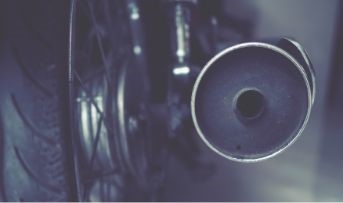
Do you see black or white smoke from your motorcycle's muffler? These can be the reasons
When you notice black or white smoke coming out of your motorcycle's muffler, it is a sign that something is not working correctly. The smoke's colour makes it possible to tell what kind of problem the engine faces. White smoke typically indicates the presence of coolant or water mixing with the fuel in the combustion chamber. Whereas black smoke typically indicates a vibrant air/fuel ratio. The causes of black or white smoke can vary.
The following are some common causes of black or white smoke coming from a motorcycle's muffler:
Black smoke
1. Fuel injectors
The ability of the fuel injectors to supply the engine with the appropriate amount of fuel may be compromised if they are clogged or broken. Black smoke can result from incomplete combustion caused by a shortage of fuel.
2. Spark plugs
Black smoke is produced when the air/fuel mixture does not burn completely due to a damaged spark plug.
3. Inappropriate fuel blend
Black smoke can result from incomplete combustion, caused when the fuel combination is vibrant or too much fuel in the air/fuel mixture. This may occur if the motorcycle uses power with a more excellent octane rating than the engine needs.
4. Air filter
Black smoke may result from the engine receiving less air than required due to a blocked or dirty air filter. A vibrant air/fuel mixture caused by a dirty air filter can result in incomplete combustion.
5. Carburetor
Black smoke can also be produced by a vibrant air/fuel mixture from a dirty or faulty carburetor.
6. Exhaust system
Black smoke can result from an accumulation of exhaust gases brought on by a damaged or blocked exhaust system.
7. Carbon accumulation
An engine's combustion chamber, valves, and pistons may accumulate carbon deposits over time. These carbon deposits can interfere with combustion and lead to black smoke.
8. Oxygen sensor malfunction
The oxygen sensor determines how much oxygen is in the exhaust gases. The oxygen sensor may be unable to provide the engine control module with reliable readings if it is broken or faulty. This can cause the engine to receive insufficient fuel, leading to black smoke.
White smoke
1. Overheating
If the engine operates excessively, the coolant may boil and combine with the fuel in the combustion chamber. Additionally, this may cause the silencer to release white smoke.
2. Incorrect fuel blend
White smoke may result from an excessively lean fuel combination or an air/fuel mixture that contains too much air. This might occur if the motorcycle is powered by fuel that doesn't meet the engine's octane requirements.
3. Transmission fluid
A motorcycle with an automated transmission may emit white smoke from the silencer if the transmission fluid is burning.
4. Defective fuel injectors
The engine may not receive the proper amount of fuel if the fuel injectors are not operating correctly. White smoke can result from incomplete combustion caused by a lack of power.
5. Coolant leak
Coolant can leak into the combustion chamber if the engine's head gasket is damaged or the cylinder head is cracked. White smoke will flow out of the muffler when the engine runs because coolant and fuel will combine.
6. Water in the fuel
White smoke may emerge from the silencer if the fuel contains water. This may occur if water has collected in the motorcycle's fuel tank due to prolonged sitting.
7. Defective glow plug
The glow plug heats the combustion chamber, which helps the engine start. White smoke may result from incomplete combustion caused by an inaccurate glow plug.
A motorcycle's muffler may emit black or white smoke, indicating several engine issues. It is essential to determine the root of the problem and take quick action to fix it to stop the engine from suffering additional damage. Taking your motorbike to an expert mechanic for diagnostic and repair is advised if unsure of the cause. Motor insurance provides financial security in the case of an accident or damage to your vehicle. It is advisable to buy motor insurance online as it eliminates the need for paperwork and mediators, which may result in cost savings on insurance premiums.
Click HERE to buy motor insurance online.
Disclaimer: The information provided above is for illustrative purposes only. To get more details, please refer to policy wordings and prospectus before purchasing a policy.
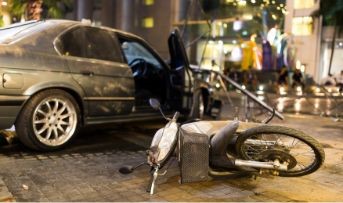
Let's have a look at some common motorcycle injuries that you must know
Motorcycles are open vehicles with no outer enclosures to protect you in case of a fall or an accident. Also, they are smaller than cars, making them less prominent and visible on the roads. This makes motorcycle riders more susceptible to accidents that can cause injuries, many times so severe that they can result in the loss of lives of the rider and the pillion.
Motorcycles are also lighter in weight, meaning they may drag on the road for a few metres after a fall or crash. This may also cause severe injury to the passengers. Let's look at some common motorcycle injuries you must know.
1. Rashes
Rashes are the most common injury that motorcycles can cause. When you fall from your bike, your arms and legs are most susceptible to rubbing against the ground's surface. This causes rashes on your skin, the severity of which depends upon the intensity of the drag or fall. If you were riding your motorcycle at high speed, you would likely develop severe rashes and bleeding, which will take a few days to heal. You can even develop infections and nerve damage.
2. Fracture
A fracture or multiple broken bones are also a common motorcycle injury. The impact of your fall on the ground can be intense enough to break or crack a few bones in your body. A fracture commonly occurs in the legs, forearms, or pelvis bones. A severe accident can even cause damage to your skull and rib cage.
3. Head injuries
The impact area of your fall from the motorcycle is often your head and neck. You may face severe head injuries, especially if you are not wearing a helmet. Youngsters tend to drive their motorcycles fast and recklessly, and falling at such high speeds can be fatal to the head and life.
4. Spinal and neck injuries
Your neck and the spinal cord may face irreparable damage if the main impact area is the neck or back. Such damage can be intense and extremely painful. The pain can be chronic, and the accident can result in paralysis, nerve damage, and even death.
5. Hands, arms, and legs
After a fall due to a motorcycle accident, you instinctively throw out your arms and land on them. Your hands and arms immediately bear the brunt of the fall, and you may suffer deep rashes, cuts, and broken bones. Such accidents can also result in nerve damage and paralysis of your arm.
Similarly, the main impact area of a motorcycle accident is your legs. In most accidents, you will hurt your legs by suffering rashes, deep cuts, or a fracture.
6. Muscle tear
A motorcycle accident often does not break your bones or cause a fracture. Instead, it causes muscle tears, soreness, and internal muscle damage. Since the impact is internal, recovery also takes a lot of time.
7. Burns
Severe burns are also a possibility when you meet with a motorcycle accident. This rarely occurs when the fall or accident is intense enough to spill the fuel from the fuel tank during the crash. The motorcycle may immediately catch fire, causing severe burns. Burns cause intense pain and take a long time to heal.
A motorcycle accident can happen unannounced with anyone, anytime and anywhere. You should always wear protective bike gear while riding your motorcycle, such as a protective jacket, knee and arm pads, gloves, etc. A helmet is a must and should be worn every time you ride your motorcycle. You should also choose a good motor insurance company in India to protect your vehicle from damages due to an accident. It will protect you financially and cover all the repair costs when your bike needs repair work.
Click HERE to buy insurance from the best motor insurance company in India.
Disclaimer: The information provided above is for illustrative purposes only. To get more details, please refer to policy wordings and prospectus before purchasing a policy.

Can depression be genetic? Let's discuss
As healthcare and mental health awareness continue to grow, the question of whether depression can be genetic has become more prevalent. Depression is a debilitating mental illness affecting millions worldwide and can be challenging to diagnose and treat. While various factors can contribute to the development of depression, including environmental and social factors, the role of genetics in the condition has been a subject of research for many years. Understanding the genetics of depression and its impact on mental health is crucial to providing appropriate care and treatment for those who need it.
We'll also understand the importance of early detection and treatment and how health insurance policies can play a vital role in curing depression. Let's get started!
1. Understanding depression
Depression is a complex mental illness that can manifest in various ways, including feelings of sadness, hopelessness, and despair. While it is a common mental health condition, depression can be challenging to diagnose and treat due to the wide range of symptoms that can be present.
2. The genetic component of depression
Research has shown a genetic component to depression, confirming that it can run in families. Studies have found that people with a family history of depression will likely develop the condition. It is advisable to consult a doctor and get routine tests done.
3. Other influencing factors in depression
While genetics play a role in depression, it is not the only factor contributing to the condition's development. Environmental components, such as stress, trauma, and life events, also significantly impact your mental health.
4. The genetics of depression: What we know so far
There is still much to learn about the genetics of depression, but researchers have made some significant strides in recent years. Studies have identified several genes that may be involved in the development of depression, including those that regulate serotonin and other neurotransmitters in the brain.
5. The importance of early diagnosis and treatment
Whether depression is genetic or not, early detection and treatment are critical to managing the condition effectively. People who are at risk of developing depression due to their family history should be screened regularly and should seek treatment if they begin to experience symptoms.
6. The role of health insurance in depression treatment
For many people, the cost of depression treatment can be a significant barrier to accessing proper care. Health insurance policies can help to mitigate these costs by covering the cost of therapy, medications, and other treatments.
7. Health insurance policy renewal and mental health coverage
When it comes time to renew your health insurance policy, reviewing your coverage for mental health treatment is essential. Ensure that your policy covers the cost of therapy and medications for mental health treatment or if there are some deductibles you may be responsible for.
8. The importance of spreading awareness about mental health coverage
If your health insurance policy does not provide adequate coverage for mental health treatment, it is essential to speak up for better coverage. Contact your insurance provider or speak to your employer's benefits department to discuss your options and work to improve your coverage.
In conclusion, depression can be a complex and challenging condition to manage, but with early detection and treatment, it is possible to live a fulfilling life. While genetics play a role in the development of depression, environmental factors, and other influences can also contribute to the condition's onset. Health insurance policies can help to make depression treatment more accessible and affordable. However, verify all the policy features at the time of health insurance policy renewal. Working together can improve mental health care and help more people get the support and treatment they need to thrive.
Click HERE to learn more about your health insurance policy renewal and how to do it quickly.
Disclaimer: The information provided above is for illustrative purposes only. To get more details, please refer to policy wordings and prospectus before purchasing a policy.

The hidden indicators in your blood test report you might not be aware of
Healthcare professionals frequently utilise blood tests to identify and track a range of medical disorders. A blood test is a medical process in which a medical professional takes a sample of a patient's blood. Then the sample is examined in a lab to measure different chemicals in the blood. Blood test costs are frequently covered as part of health insurance plans in India. Depending on your chosen insurance plan, the scope of coverage and the particular blood tests covered may differ.
It would be best if you were made aware of the significance of several hidden indicators which can provide important details about your general health and assist in detecting future health issues.
1. Vitamin D
Vitamin D helps immune health, bone health, and other bodily functions. Numerous health issues, including osteoporosis, depression, and an elevated risk of several malignancies, can be brought on by low vitamin D levels. People who reside in places with little sun exposure are more likely to have vitamin D deficiencies.
2. Thyroid hormones
The thyroid gland releases hormones that regulate the body's metabolism and production of energy. Fatigue, weight gain, and depression are just a few health issues that are caused due to low thyroid hormone levels. Other causes of thyroid abnormalities include autoimmune diseases and radiation exposure.
3. C-reactive protein (CRP)
C-reactive protein (CRP) is produced in the body in response to inflammation. Increased CRP levels can signify several medical conditions, including infections, autoimmune diseases, etc. Cancer, diabetes, and arthritis are a few examples of chronic diseases that can be contributed to inflammation in the body.
4. Triglycerides
Blood contains a specific kind of fat called triglycerides. Cardiovascular disease risk is enhanced by having high triglyceride levels. Obesity, a high-carbohydrate diet, and particular medications are just a few of the things that might raise triglycerides.
5. White blood cells
White blood cells are a specific type of blood cell that aids in the body's defence against illness and infection. Abnormal white blood cell counts can indicate a disease such as leukaemia and autoimmune disorder which can weaken bodily function and be life-threatening.
6. Iron
An essential ingredient called iron is required for the production of haemoglobin. This protein is found in red blood cells that transport oxygen throughout the body. Anaemia is the condition when the body produces insufficient red blood cells, and low iron levels can cause it. In addition to other symptoms, anaemia can make you tired and worn out.
7. Homocysteine
Homocysteine is an amino acid produced during the metabolism of methionine, an essential amino acid. Elevated homocysteine levels are linked to a higher risk of cardiovascular disease, stroke, and Alzheimer's.
8. HbA1c
Diabetes is diagnosed and managed using the HbA1c blood sugar control indicator. The risk of consequences like kidney damage, nerve damage, and cardiovascular disease can increase when HbA1c values rise because they signify poor blood sugar control.
9. Creatinine
Creatinine is a waste product filtered out of the body by the kidneys and produced by muscle metabolism. Several symptoms, including fatigue, fluid retention, and high blood pressure, can be caused by elevated creatinine levels. Elevated levels of creatinine can be an indication of kidney damage or injury.
An individual's health status can be determined a lot by blood tests. In addition, there are a lot of hidden indicators in these tests that can reveal important information about your health conditions. Discussing blood reports with your healthcare professional is essential to understand your overall well-being. The cost of diagnostic testing, including blood tests, can be covered under health insurance plans in India. These plans could be excellent for people who want frequent check-ups to monitor their health status. It is always advisable to verify all the terms with your insurer and do thorough research before purchasing health insurance plans in India.
Click HERE to browse different health insurance plans in India.
Disclaimer: The information provided above is for illustrative purposes only. To get more details, please refer to policy wordings and prospectus before purchasing a policy.

The power of positive thinking: How to develop a growth mindset for success
Our way of thinking and approach to life significantly impact our success and well-being. The growth mindset, or the power of positive thinking, is a well-known concept that has gained widespread recognition in recent years. This mindset emphasises that we can develop our abilities and intelligence through hard work, dedication, and a positive attitude. Here, we will explore the power of positive thinking and how to develop a growth mindset for success.
What is a growth mindset?
The term "growth mindset" was coined by a well-known psychologist and researcher, Carol Dweck. A growth mindset defines that one's abilities can be developed and polished through hard work and perseverance. People with a growth mindset view challenges and failures as opportunities for growth and steer themselves out by making strong comebacks to achieve their goals. In contrast, people with fixed mindsets believe their abilities and intelligence are predetermined and cannot be changed. They shy away from hardships and give up easily when faced with challenges.
The power of positive thinking
Positive thinking is a crucial component of developing a growth mindset. It involves focusing on the positive aspects of a situation and looking for opportunities to learn and grow. Positive thinking can help develop a growth mindset by:
● Changing your perspective: Approaching challenges and failures with a positive mindset enables you to view them as opportunities for growth. You can learn valuable lessons from the experiences and avoid the thoughts that demotivate you.
● Increasing resilience: Positive thinking helps to develop resilience or the ability to recover from adversity. Focusing on the positive aspects of a situation equips you to tackle problems and endure difficult times.
● Boosting confidence: Positive thinking helps to boost your confidence and self-esteem. When you believe you can shine your abilities and overcome hurdles with a passionate intent, you're more likely to take risks and accomplish your goals.
How to develop a growth mindset?
Developing a growth mindset requires time and effort, but it's worth it. Following are a few ways to develop a growth mindset:
● Embrace challenges: It is the best thing to do to make growth chase you. Seek out challenges rather than running away from them. Every new challenge gives you a new experience that shapes your skills and confidence to improve.
● Learn from failures: When you experience failures or setbacks, reflect on what you can learn from those experiences. Consider what you could have done differently and how to improve next time.
● Cultivate a positive mindset: Focus on the positive aspects of a situation and look for opportunities that promise you contentment. Practice gratitude, positive self-talk, interact with positive people, and consume motivational content to help shift your mindset to a more positive outlook.
● Emphasise effort over talent: You're more likely to succeed when you work hard and put in the effort. Be consistent with what you do and continue to work hard unless you achieve your objectives.
A positive mindset is essential when caring for our health and well-being. By maintaining a positive outlook, we can stay motivated to lead a healthy lifestyle, seek the best healthcare options, and take steps to prevent illness and disease. Similarly, developing a growth mindset can help us stay motivated to achieve our goals and overcome challenges related to our health.
Choosing the best health insurance in India is just one of the many steps to ensure we care for ourselves and our loved ones in the best way possible. The power of positive thinking and the growth mindset can profoundly impact your success and happiness. By accepting challenges, learning from failures, and cultivating a positive mindset, you can develop the skills and abilities needed to be successful. Developing a growth mindset takes time and effort, but you can achieve great things with dedication and hard work.
Click HERE to buy the best health insurance in India.
Disclaimer: The information provided above is for illustrative purposes only. To get more details, please refer to policy wordings and prospectus before purchasing a policy.
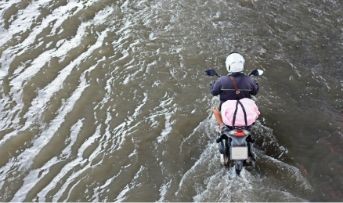
The complete guide for bike safety during floods
Biking is a well-liked form of exercise and transportation, but it may also be dangerous when floods occur. One of the natural calamities that occur most frequently worldwide is flooding. As a result, the nation suffers severe socio-economic losses. Floodwaters can cause highway disasters, create dangerous situations, and increase the risk of electrocution. You can, however, ride your bike safely during floods if you take the proper safety measures.
Even though caution can significantly lower the chance of accidents and injuries when biking through floods, unexpected events can still occur. Bike insurance offers financial security and peace of mind in such circumstances. Here's a detailed guide to biking safely during floods.
1. Plan your route
It's essential to consider regions prone to flooding, such as low-lying areas, riverbanks, and bridges, while planning your motorcycling route during a flood. Always stay on high ground and avoid these regions. Plan a path that stays clear of the flooded areas using online maps.
2. Use lights
Motorcycle lights make you more visible to other drivers when it's dark or low light. Ensure that your bike has lights and reflectors. It would help if you also considered bringing a tiny torch or headlamp in an emergency.
3. Stay informed
It's essential to be aware of local conditions before riding a bike during a flood. If there are flood warnings or advisories, keep an eye on local weather forecasts and news updates to stay informed. Avoid riding in regions with flood warnings or advisories and take a different route.
4. Wear appropriate gear
You must wear appropriate clothing to protect yourself from the rain and water when riding through a flood. Put on a waterproof jacket and a pair of trousers to keep dry. Ensure that your shoes are water-resistant as well. Wearing reflective clothing or gear can improve your visibility to other drivers.
5. Slow down
Riding in flooded regions requires extra caution and slowing down. Floodwaters may be deeper than they appear and may cover trash or other obstructions. To avoid any unforeseen dangers, slow down.
6. Watch out for dangers
Be cautious when riding through floodwaters to avoid obstacles like downed trees, electricity lines, and perhaps washed-in debris. Avoid these risks whenever possible. If you encounter a downed power line, maintain a distance of at least 10 feet and contact your local power company immediately.
7. Follow the guidance of authorities
It's essential to follow the advice of emergency officials and local authorities during a flood. Road closures and evacuation orders may be included in this. Consult with local authorities first if you are unsure whether riding in a particular location is safe.
8. Stay on marked bike paths
Stick to marked riding paths or roads that are open and safe for commuting. Avoid any areas that are closed off or that the authorities have blocked. When a road is closed, or a diversion is indicated, follow the instructions on the sign.
9. Avoid fast-moving water
Avoid riding your bike across the moving water since it might easily knock you off and take you with it. If you must ride your bike through the water to cross a flooded area, walk your bike instead. Remember that riding a motorcycle through even a few inches of water can be fatal.
Additional safety measures and close attention to detail are needed when biking during a flood. You can safeguard your safety when biking through floods by carefully planning your route and following official guidance. Remember, it's always better to avoid biking in dangerous conditions whenever possible. Bike insurance can offer significant financial protection in unforeseen circumstances like floods or other conditions. Review your policy carefully and take the appropriate safety measures to safeguard you and your bike.
Click HERE to invest in the bike insurance policy.
Disclaimer: The information provided above is for illustrative purposes only. To get more details, please refer to policy wordings and prospectus before purchasing a policy.
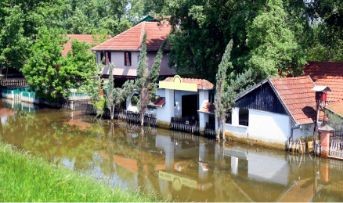
Here are some ways to ensure the protection of your dear ones and assets from flood
Floods are natural disasters that can happen unexpectedly, causing damage to property and putting lives in danger. Even while you can't always stop a flood from occurring, there are precautions you can take to safeguard yourself and your property from damage.
Personal accident insurance India does offer protection in an accident that leaves someone injured or dead. But buying a separate flood insurance policy to protect yourself and your property from flood damage will be ideal. Typically, this policy will cover flooding-related harm to your house, assets, and other property.
Let's look at a few guidelines to protect your loved ones and assets against flooding:
1. Know your risk
The first step in preventing floods from harming you and your belongings is to become aware of your area's flood risk. The likelihood of flooding varies from place to place depending on geography, elevation, and proximity to water sources. Consult the Flood Map Service Centre to determine your flood risk. You can contact your local government or emergency management office to learn about flood dangers.
2. Buy flood insurance
Getting flood insurance is one of the most crucial things you can take to safeguard your home against flood damage. You'll need a particular flood insurance policy to protect your property since standard homeowner's insurance sometimes doesn't cover flood damage. The National Flood Insurance Programme (NFIP) and private insurers offer flood insurance. It's important to carefully read your policy to understand what it covers and how much insurance you have.
3. Elevate your property
Consider elevating your home if you live in a flood-prone location to reduce the chance of heavy damage. Raising your house or property above flood level is called promoting it. It can be accomplished in many ways, including constructing a raised foundation or adding stilts or piers. You can reduce the cost of your flood insurance by elevating your home.
4. Safeguard important documents
Important papers, including insurance policies, forms of identification, etc., should be kept in a secure location in case of a flood. Store these documents in a position that won't likely be affected by flooding. Store them in a waterproof container, like a safe or waterproof bag. You can also make digital copies of your key documents and store them safely online or on a portable hard drive.
5. Install flood-barriers
By keeping water from entering your home, flood barriers can help safeguard your property against flood damage. Sandbags are typical flood barriers to build a wall against flood waters around your home. Another form of flood barrier that is quick and simple to install is a water-filled barrier. Levees or other permanent flood barriers can also be implemented, offering long-term protection against flood damage.
6. Stay informed
You can prepare for a flood and reduce the risk of damage by staying updated about flood alerts and advisories. You can sign up for alerts from emergency management agencies and follow local weather reports online. Follow local officials' advice and vacate the place if a flood warning is issued for your area.
7. Have an emergency plan
You and your family can stay safe in the case of a flood if you have an emergency plan in place. Your emergency plan should contain escape routes, emergency contacts, and a list of things you must take while leaving. To ensure everyone is prepared, practise your emergency plan with your family.
Protecting you and your property against flooding is essential to reduce damage and safeguard your well-being. By looking at flood maps and learning about the local flood history, you can estimate the risk of flooding. Additionally, an emergency plan should be created that details evacuation routes, contact options, and emergency supplies. In addition to personal accident insurance India, buy a separate flood insurance policy to protect assets from the flood.
Click HERE to buy a reliable personal accident insurance India policy.
Disclaimer: The information provided above is for illustrative purposes only. To get more details, please refer to policy wordings and prospectus before purchasing a policy.
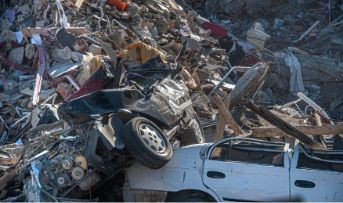
Complete guide to ensure the safety of your car during an earthquake
As natural catastrophes become more frequent and severe, safeguards are critical to keeping our vehicles safe. As car owners, we put a lot of time and money into buying and maintaining our automobiles. Therefore, we must protect them against disasters like earthquakes. Not only earthquake damages are expensive to fix, but they can also jeopardise your and your family's safety. In this article, we will go through a complete guide to ensure the safety of your car during an earthquake. We will review detailed points to protect your vehicle and yourself from potential earthquake damage.
In addition, we will discuss the significance of online car insurance and how it can assist in protecting you financially in the event of earthquake damage. Following these tips may make your car as safe as possible during an earthquake and be better prepared for future natural disasters. Let's get started.
1. Select a secure parking spot
Choosing a safe parking area is critical to ensuring your car's safety during an earthquake. Avoid parking in places prone to landslides or with many trees that could fall on your vehicle. Look for parking spaces in open areas away from buildings and trees, such as parking lots. Additionally, attempt to position your car facing outwards so you may quickly evacuate in an emergency.
2. Safeguard your vehicle
When an earthquake strikes, your car may shake severely, and anything inside may become lethal projectiles. As a result, it's always advisable to keep your car's contents intact and unloose. Protect any unsecured goods inside your vehicle, such as computers, luggage, and other items. Additionally, ensure that your car is in good shape and that all parts, including wheels and tyres, are securely fastened.
3. Keep valuable documents safe
Maintaining your car insurance documents, registration papers, and other important documents is required in a secure location. Always keep them in a waterproof and fireproof container in your car or a safe place at home. Keep a digital copy of your documents on your phone or other digital devices.
4. Check your online car insurance protection
Earthquakes can cause severe damage to your vehicle, so ensure your car insurance is updated. Verify your online car insurance policy covers earthquake damage. Also, be sure you understand what your insurance policy covers and what it does not.
5. Prepare an emergency kit
During an earthquake, having an emergency pack in your car is critical. A first-aid kit, a torch, a blanket, a map, and a portable charger should all be included in the kit. You can also have some non-perishable food and drink.
6. Stay in your car
During an earthquake, remain inside your vehicle and fasten your seatbelt until the shaking stops. If you're driving, pull over to a safe location, turn off the engine, and remain inside your vehicle until the shaking stops.
7. Be cautious after the earthquake
Drive with caution after the earthquake. Examine your vehicle for any apparent damage, such as dents, scrapes, or shattered windows. If you fear that your car has suffered substantial damage, wait to drive it until a specialist has inspected it.
8. Prepare for future earthquakes
Earthquakes can occur anytime, and preparing for future quakes is critical. Keep your car in good shape and regularly serviced to guarantee its functioning. Consider adding safety measures, such as a GPS tracker, an alarm system, or a dashcam, to protect your vehicle in the event of damage.
In conclusion, securing the safety of your vehicle during an earthquake is critical. The above safety tips can help safeguard your car from harm during an earthquake. Protect yourself and your family by adequately preparing and caring for your vehicle during an earthquake. You can explore all the insurance options available from the convenience of your home and purchase online car insurance that caters to your needs in the best ways possible. Remember that safety comes first, and taking precautions now might save you a lot of trouble later.
Click HERE to learn more about purchasing online car insurance and its benefits.
Disclaimer: The information provided above is for illustrative purposes only. To get more details, please refer to policy wordings and prospectus before purchasing a policy.
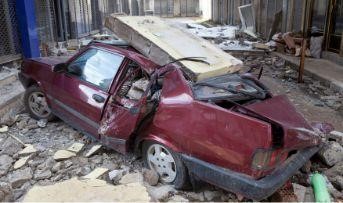
The future of car insurance coverage for earthquakes in India: Trends and innovations
The frequency and intensity of earthquakes have grown in recent years, inflicting property damage, including car damage. Car owners are required by law to carry car insurance, and as a result, insurance policies are expanding to cover earthquake damage. The future of automobile insurance coverage for earthquakes in India is a critical issue that impacts both car owners and insurance providers.
In this space, we will look at the various types of coverage available, the role of technology, and how car owners may guarantee their vehicles the best coverage in the case of an earthquake. Let's begin!
1. Increase in natural disasters
Natural disasters such as earthquakes have become more common in India. Since India has been witnessing more earthquakes with magnitudes greater than 3.0 recently, car owners must have insurance coverage to safeguard their valuable assets against the adversities of an earthquake.
2. Comprehensive car insurance
Comprehensive car insurance protects your car against natural disasters such as earthquakes. It differs from a third-party liability policy, which solely covers damages to a third party in the event of an accident. Car owners should think about getting comprehensive car insurance that covers earthquake damage.
3. Earthquake coverage add-ons
Aside from comprehensive insurance, vehicle insurance companies often provide add-ons to cover specific natural disasters such as earthquakes. The optional features include engine protection, roadside assistance, and 0% depreciation. Car owners should consider obtaining these add-ons to supplement their coverage.
4. Usage-based car insurance
In India, usage-based automobile insurance coverage is becoming more common. These policies base premiums on vehicle usage, and the car owners who drive their vehicles less frequently pay a lower rate. In the future, usage-based automobile insurance policies can be tailored to provide earthquake coverage based on the vehicle's geographical location.
5. Telematics
Telematics uses technology to monitor a vehicle's performance and usage. In the future, automobile insurance companies may utilise telematics to track the car's location and provide coverage for earthquake damage based on the vehicle's location.
6. Artificial Intelligence (AI)
Artificial intelligence can be used to analyse data and generate customised insurance plans. In the coming years, AI might analyse earthquake-prone locations and offer customised vehicle insurance coverage to protect against earthquake damage.
7. Self-driving cars
As self-driving cars become more prevalent in India, it is crucial to remember that just like regular cars, they are exposed to theft, loss, or damage through natural calamities such as earthquakes, storms, or human-made issues like riots. As a result, the growing demand for customised insurance coverage that covers unique circumstances for self-driving automobiles. The insurance coverage premiums, as mentioned earlier, would be based on the criteria such as the car’s location, distance from the epicentre, and the time of the earthquake.
8. Internet of Things (IoT)
The Internet of Things (IoT) uses linked devices to collect and analyse data. IoT can be used to monitor cars and identify earthquakes in real-time. The information can be used to create tailored insurance policies that cover earthquake damage. Car insurance firms, for example, can use IoT to detect when a car is parked in an earthquake-prone location and provide coverage for probable damage.
Car insurance policies are evolving to cover natural calamities such as earthquakes. Car owners can buy car insurance policy online that cover specific natural disasters such as earthquakes. Car insurance coverage will be personalised based on telematics, artificial intelligence, and self-driving cars. Owners should explore all the options and buy a car insurance policy online from trustworthy firms to get the best insurance coverage and a policy that caters to all their needs.
Click HERE to learn more about how you can buy car insurance policy online.
Disclaimer: The information provided above is for illustrative purposes only. To get more details, please refer to policy wordings and prospectus before purchasing a policy.
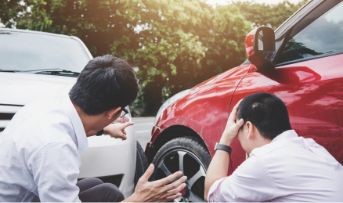
Here's all you need to know about parked car damage and the ways to deal with it
Imagine you park your car in the open and are left surprised when you find it crashed. Parking damage refers to the damage caused to your parked car by an unknown person. You should know what to do if someone hits your parked car.
This article tells you what to do when someone damages your parked car. Additionally, it is advisable to buy car insurance online to protect your vehicle from unexpected damage.
Who pays for parking damages?
If a known person with a liability car insurance policy hits your parked car, their insurance company will pay for your damage. But if a stranger or unknown person hits your car, your car insurance company will pay for the parked car damage.
What should you do when someone hits your parked car?
The first thing you should do is to remain calm and alert when you encounter a parked car damage and follow these tips, including:
1. Find the witness to the accident
If you don't see a driver damaging your car, you should look for witnesses to the accident. Try to find the people who were at the accident spot, and once you find them, ask them about the description or details of the vehicle that damaged your car.
2. Note the offender's details
If you see a vehicle that damages your car, write down its details on paper, such as its registration number, colour, model, etc., and store it safely. You'll have to produce all these details at the police station at the time of filing the FIR and insurance claim.
3. Look for a security camera
Generally, parking spaces and market areas have security cameras installed. You can check who slammed your car and use a copy of the footage to claim your car's damage coverage. However, if the parking space has no cameras, look for nearby residences and shops with security cameras.
4. Capture image proof of the accident spot and your damaged car
Take a picture or video of the accident spots and your damaged car, and procure it as evidence of the accident. Insurance companies will approve your claim based on image proofs.
5. Call the police and file an FIR
Report to the police about your parking car damage, as they can help you find the offender. Moreover, if someone gets injured in a parking car accident, calling the police and filing an FIR becomes mandatory.
6. Inform your car insurer about the accident
Once you follow all the above steps, you should notify your car insurance company about the accident. The company will help you cover your car damage by raising a claim.
What to avoid when someone hits your parked car?
Most people make common mistakes when encountering parking damage. Here are the mistakes you should avoid, including:
1. Chasing the offender
Avoid chasing the driver that hit your car before checking for car damages like leaks, brake failure, etc., or any injuries caused to the person inside the car. Check for injuries and seek medical attention if required.
2. Creating chaos
Most people lose their composure and cause chaos by blaming others around the accident spot. Instead, stay calm and capture pictures or videos of accident spots.
3. Sending car for repair
You should avoid sending the car for repair before filing an FIR and informing the insurance company.
Parked car damage is an upsetting accident, but you have to be patient before you take any steps to deal with it. It is better to wait for the person who hit your car to return and complete the accident report together. If not, follow the above tips to get compensation for the damages to your car from your insurer. Whether you have an expensive or leased car, you should get car insurance online to insure it against parking damage, injury to the driver, and theft.
Click HERE to buy car insurance online.
Disclaimer: The information provided above is for illustrative purposes only. To get more details, please refer to policy wordings and prospectus before purchasing a policy.


